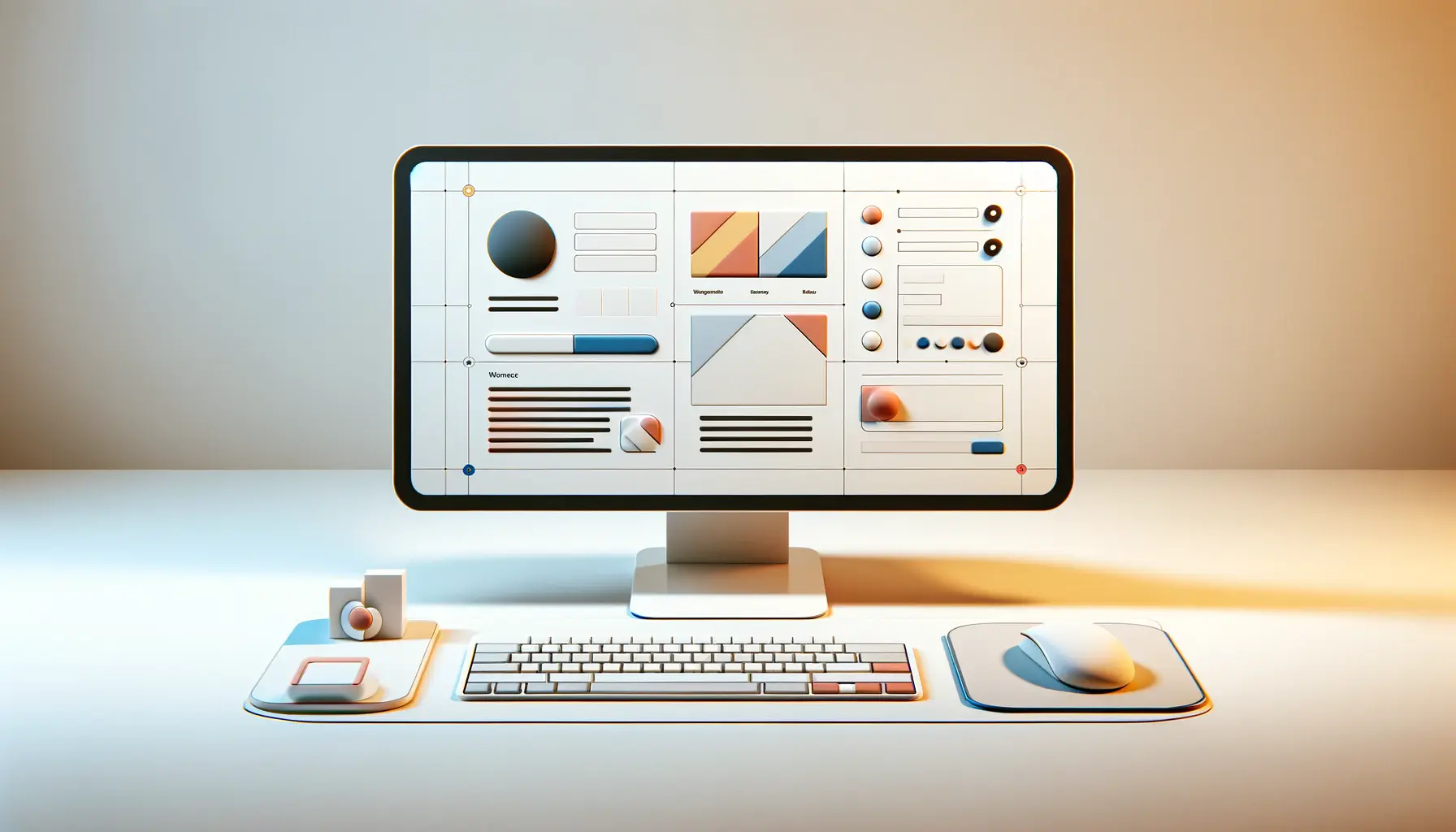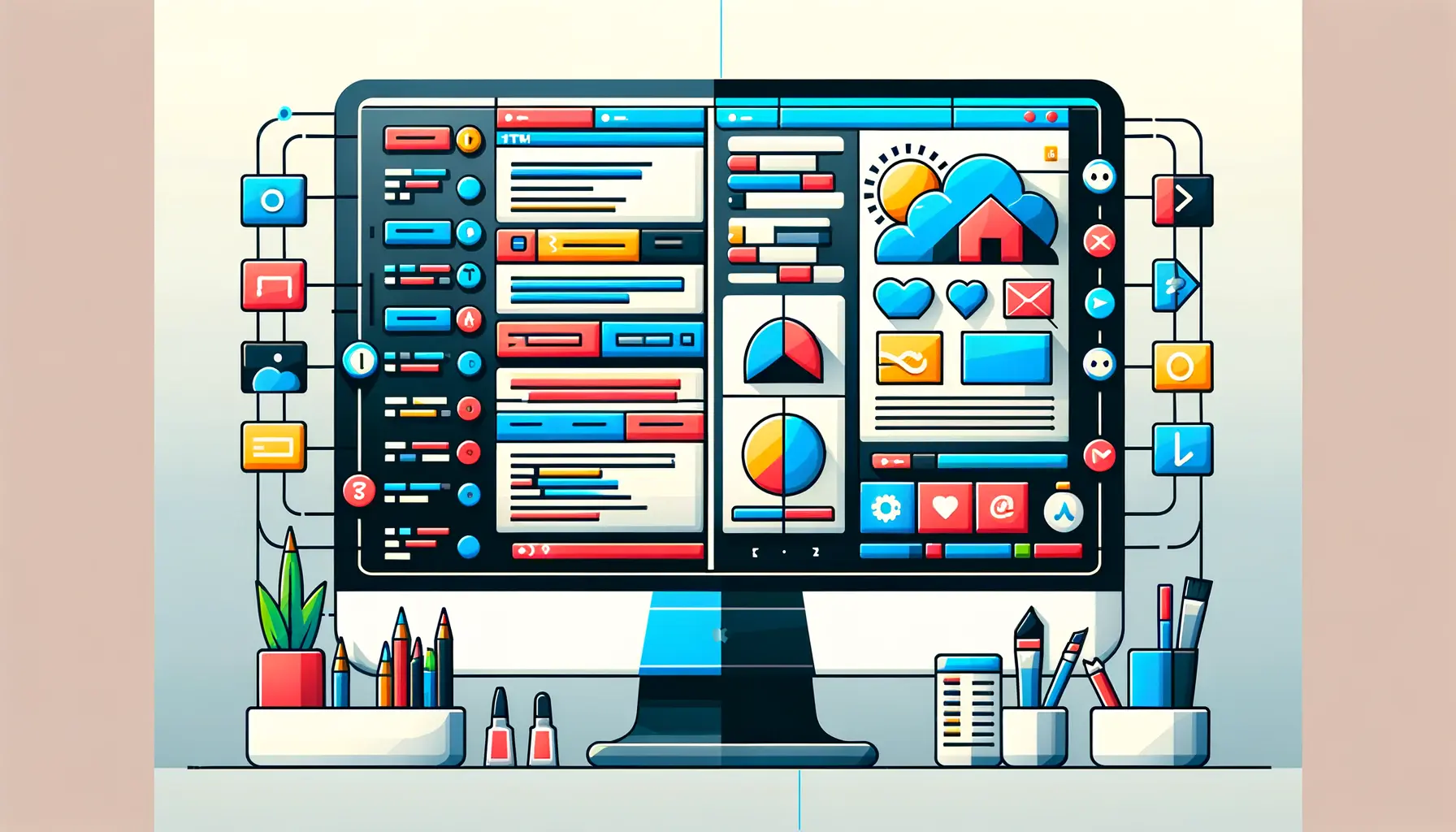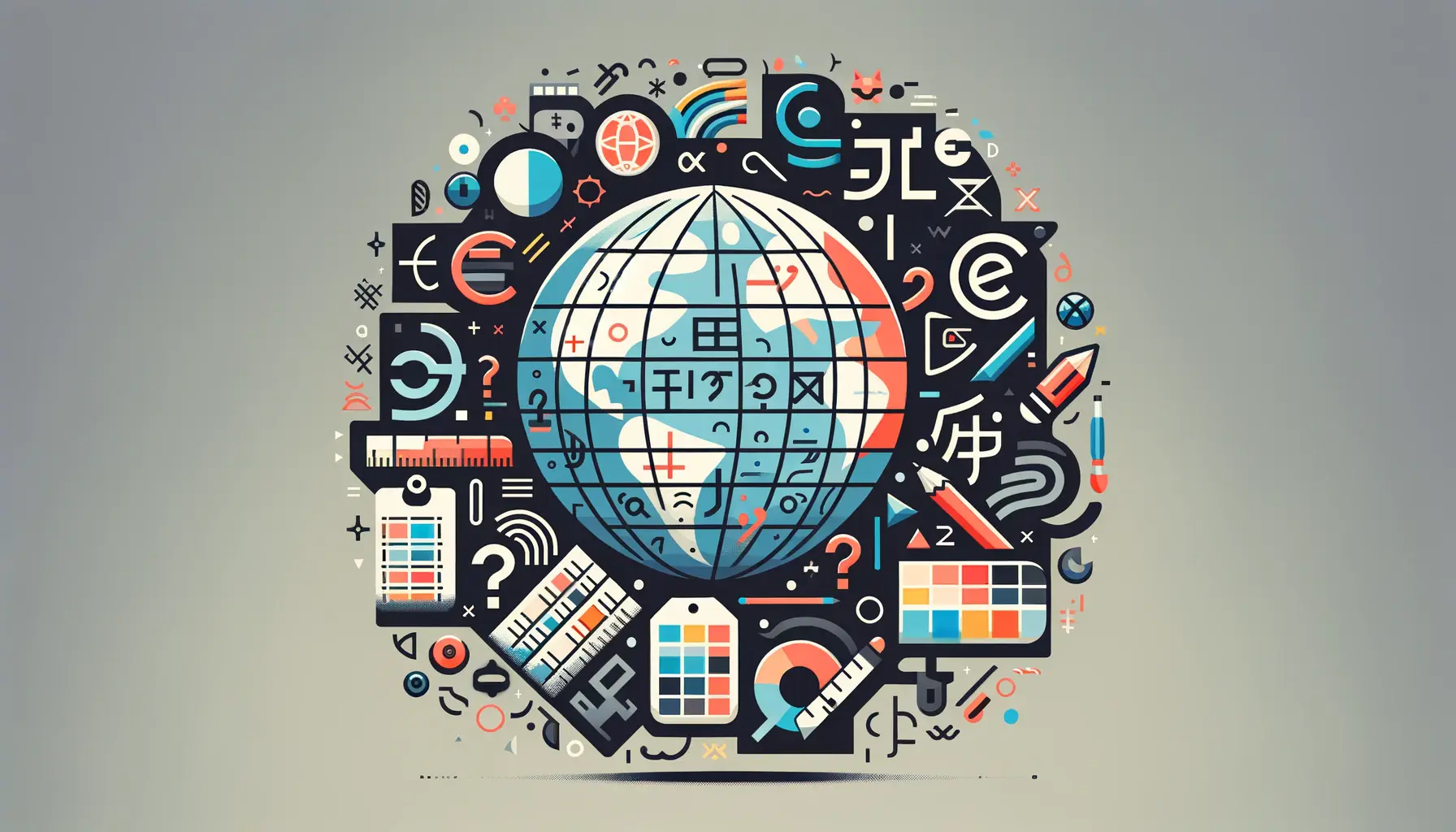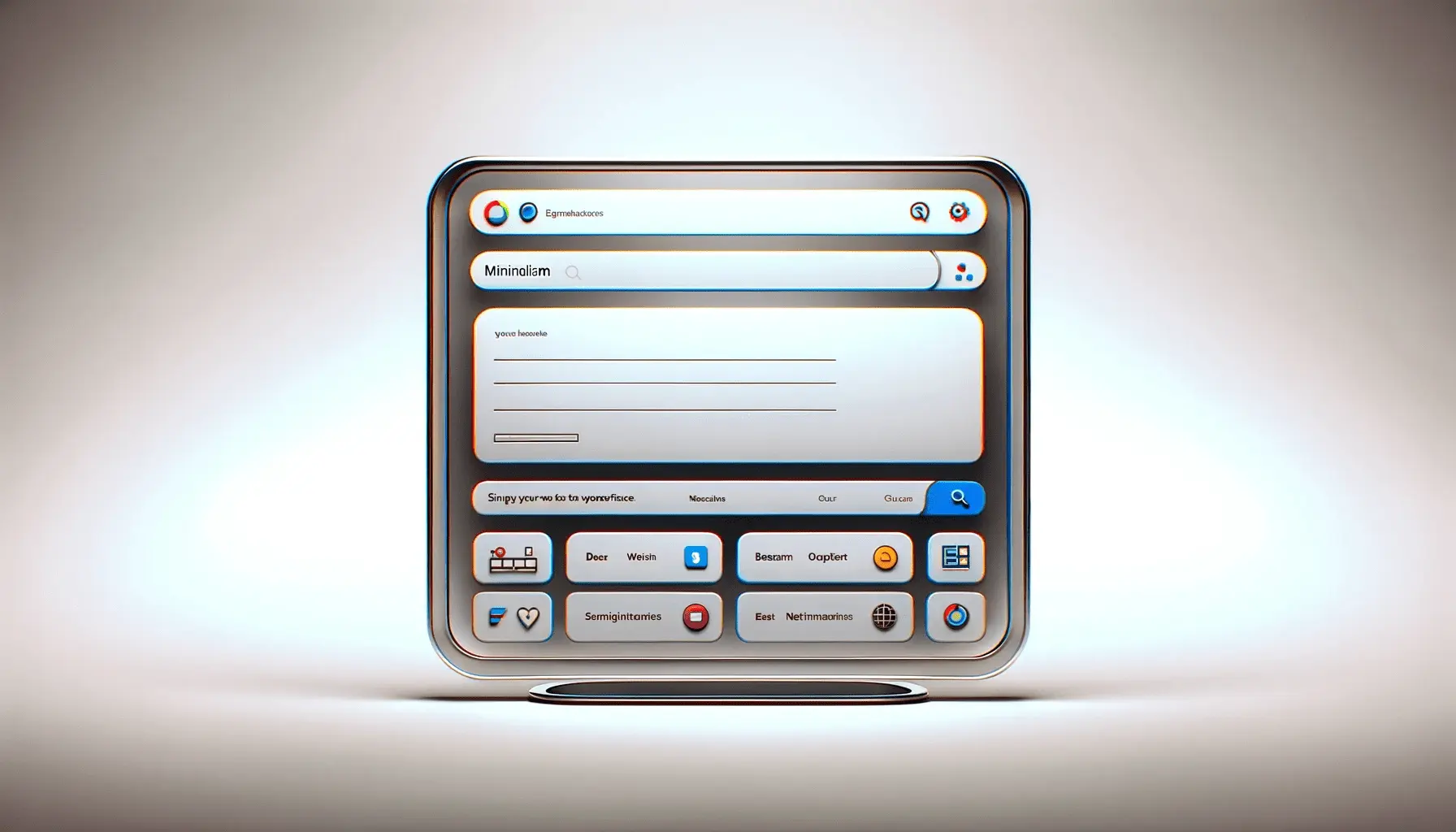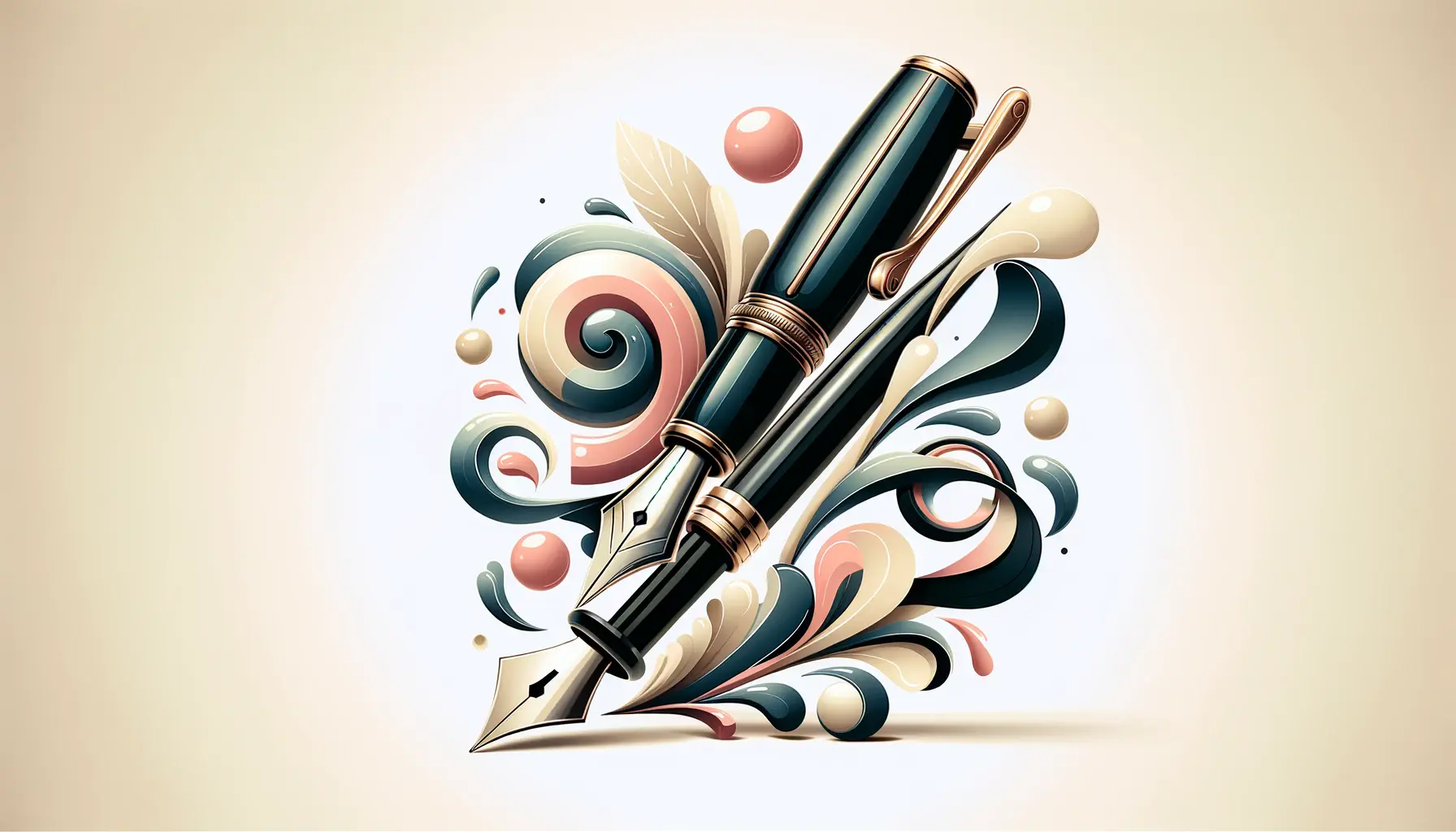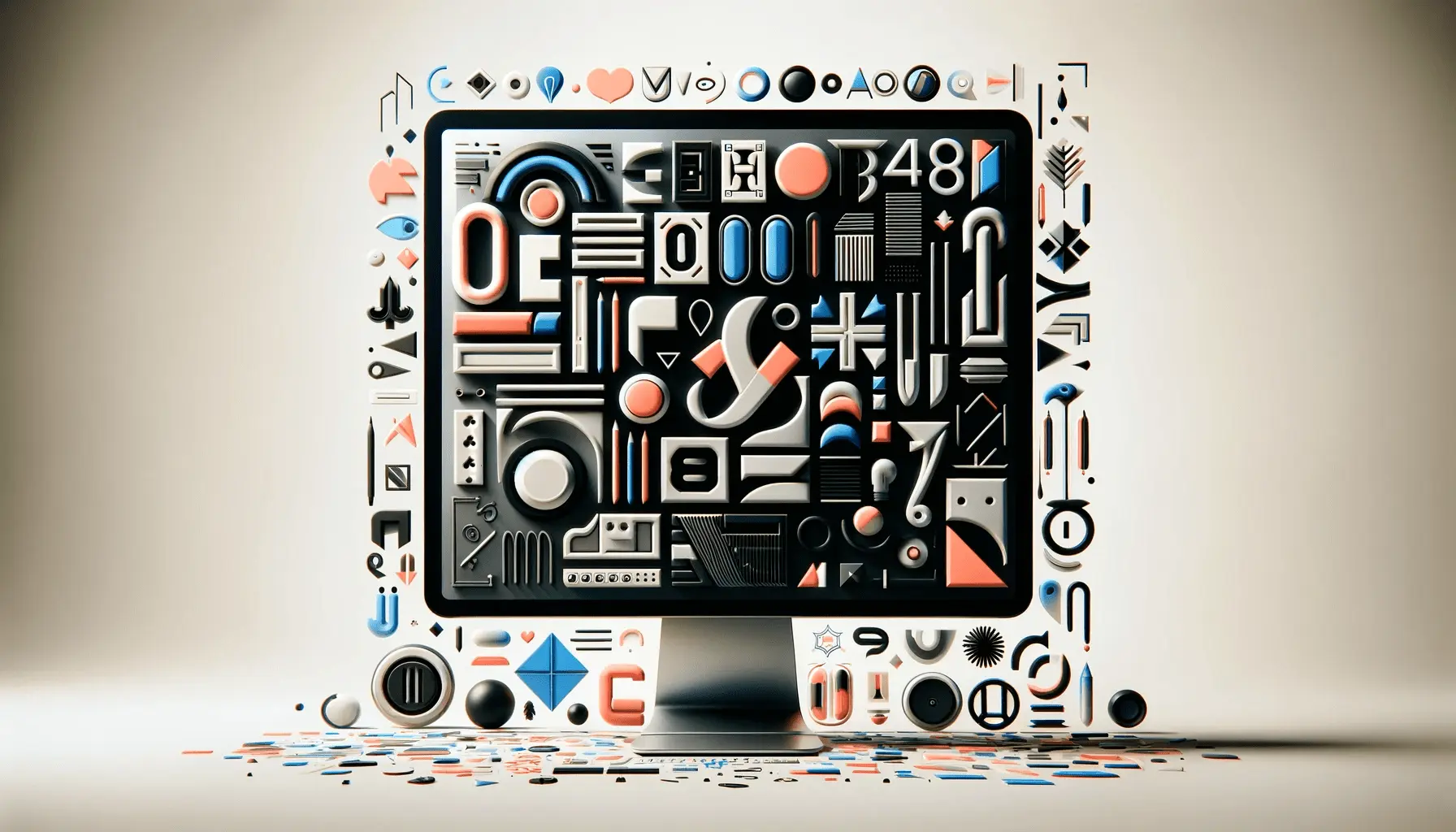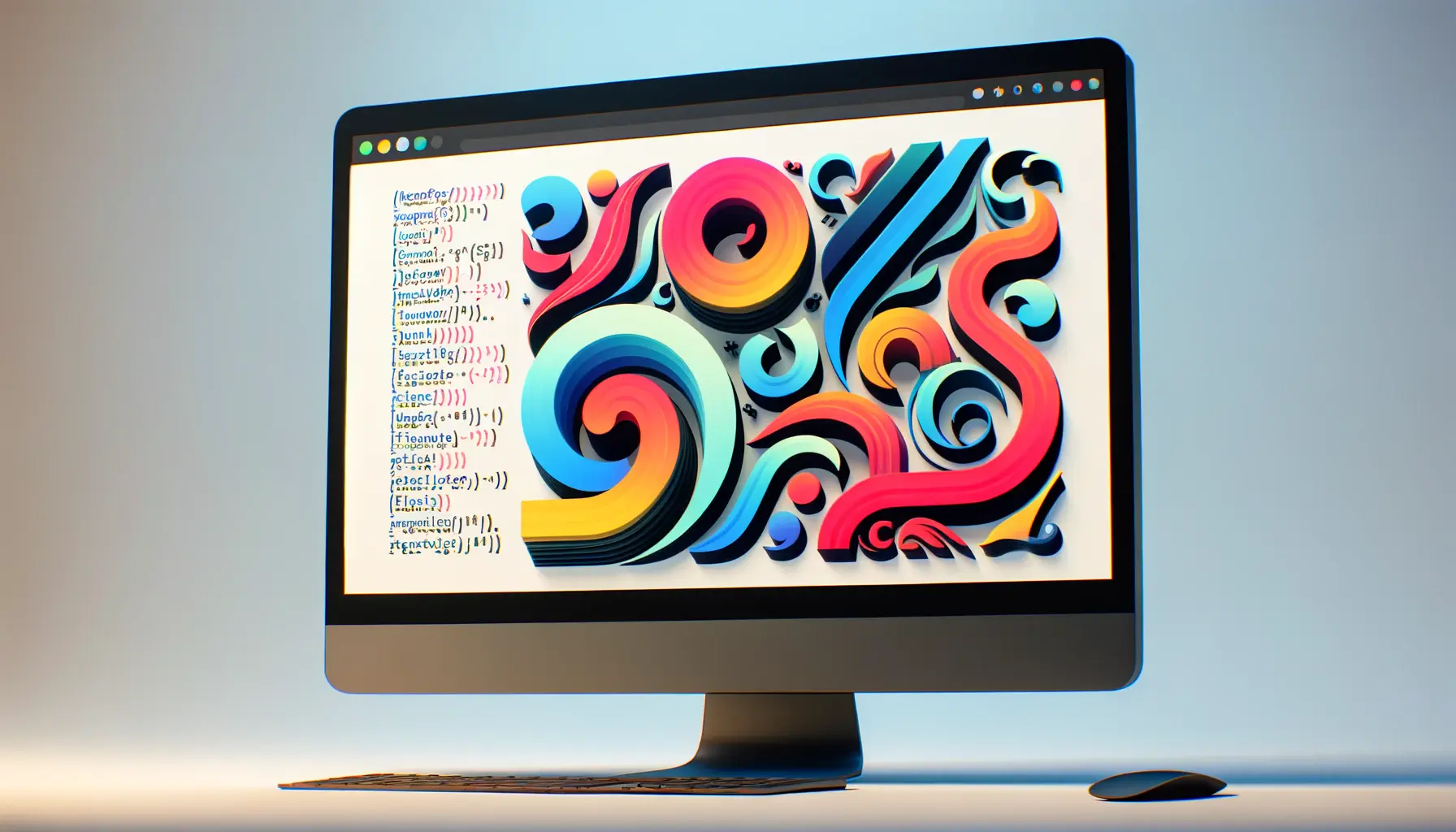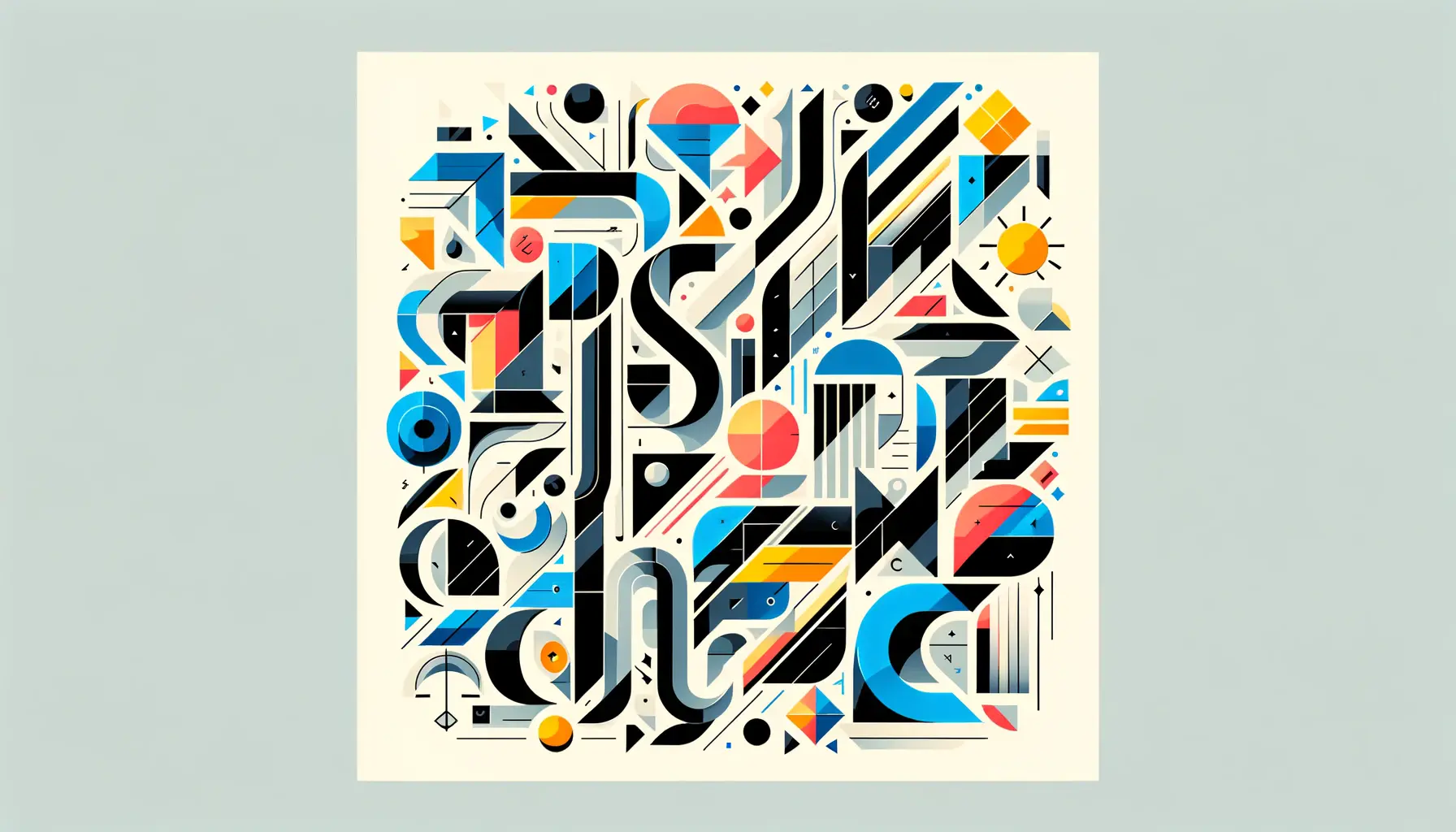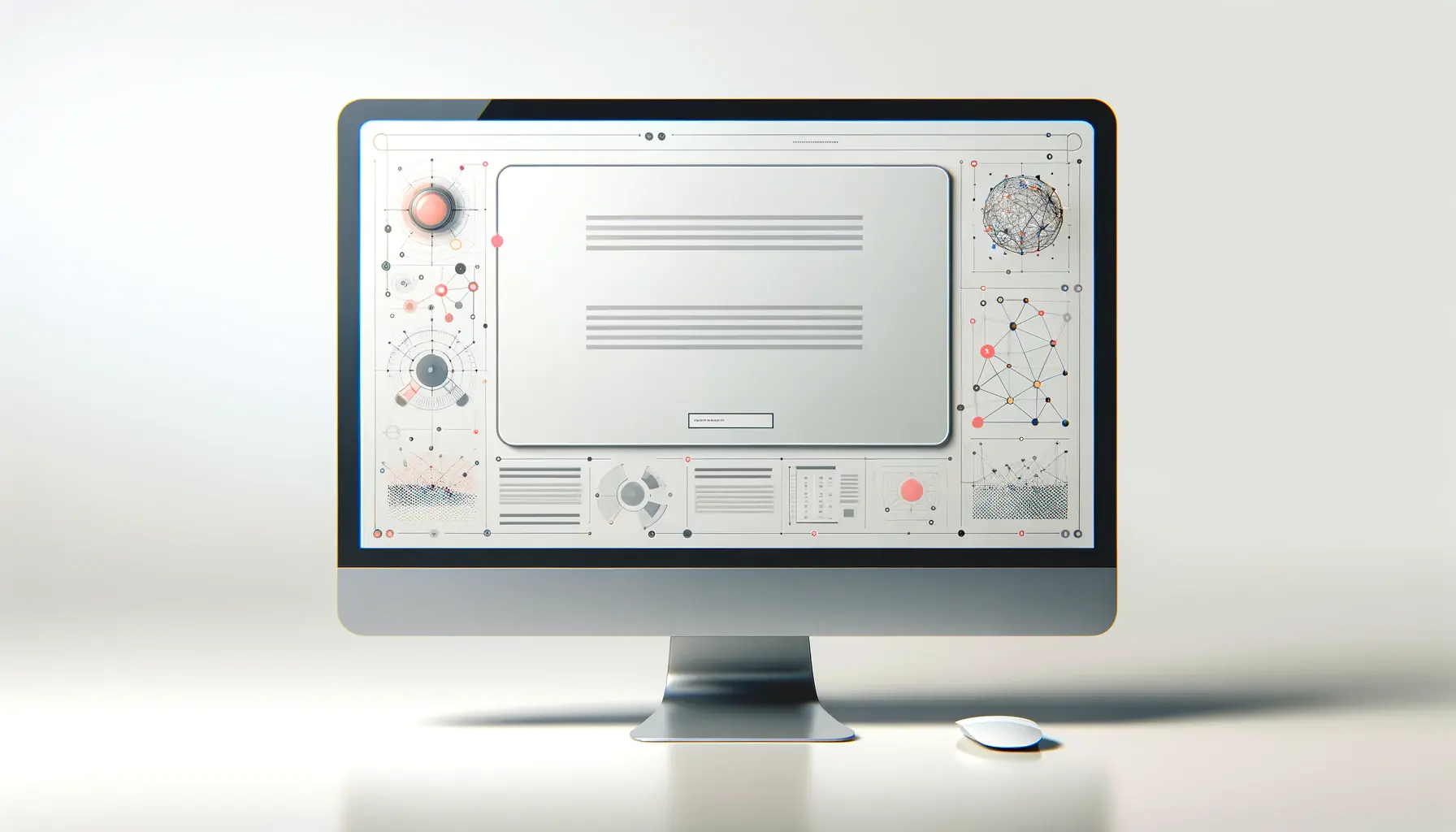Typography is more than picking a dashing font—it’s a tool in web design with the power to influence how your audience feels, reads, and interacts with your site.
As the digital frontier is constantly in flux, typography trends keep reshaping the manner in which we present content online.
Whether you’re building a bold homepage or simplifying a minimalist blog layout, staying ahead of these typography trends can propel your site’s overall user experience to the next level.
In this article, we’re going to dig into the latest typography trends driving web design in 2025.
We’re going to check out the layouts designers love, the tools making fonts more powerful, and how you can implement these ideas in your own designs.
If you want to keep your site as up-to-date, interesting, and aligned with modern expectations as possible, then you’re in the right place.
Let’s start by understanding why typography trends are such a big thing on the modern web design landscape.
- Why Typography Trends Matter in Modern Web Design
- Popular Typography Styles Dominating 2025
- Emerging Typography Trends to Watch
- Best Practices for Executing Typography Trends
- Tools and Resources for Modern Typography
- Conclusion: Embracing Typography Trends in 2025
- Frequently Asked Questions on Typography Trends
Why Typography Trends Matter in Modern Web Design
Typography trends aren’t just about appearance—they influence usability, branding, and how your audience perceives your content.
Whether you’re building or sustaining a digital presence, knowing how typography trends influence design can be a game-changer.
Let’s break it down.
Typography as a Key Element of User Experience
Ever come across a page where the text is hard to read?
Poor typography can deter visitors in a second.
On the other hand, thoughtful type choice guides users smoothly through your content.
Typography trends regularly evolve to improve the manner in which users read and interact with text-heavy pages.
- Modern fonts are created with digital readability as a priority.
- Stylish layouts create visual rhythm, attracting readers.
- Dynamic typography encourages interaction and exploration.
Keeping current with typography trends makes your design choices seem intentional—not outdated or random.
The Role of Readability and Accessibility
Typography is a driving force behind accessibility.
As more and more users employ screen readers or navigate with cognitive impairments, font selection matters.
Typography trends for today emphasize accessibility through:
- Clean font spacing and line height for improved readability.
- High contrast designs that are readable by all.
- Font systems that can scale on device and screen size.
Think of accessibility not as an added feature, but as a standard.
Typography trends work to further this line of thinking in web design.
How Fonts Affect Brand Identity
Your typography speaks for your brand even before a word is read.
Is your website bold and vibrant?
Relaxed and professional?
Typography trends enable brands to speak their personality through font style, weight, and spacing.
The right font can make an instant impression that speaks to your audience.
- Modern sans-serifs can feel smooth and high-tech.
- Script fonts speak sophistication and imagination.
- Retro-style fonts can create a warm, retro feel.
Consistency with typography trends enables you to leverage the visual vocabulary your users already understand.
Visual Hierarchy and Content Flow
Typography trends help designers to create an intelligible content hierarchy.
Striking headlines, active line breaks, and normal spacing create a natural flow of reading.
This engages users in consuming information faster and keeping their attention longer.
- Hierarchy makes it easier to scan, especially on mobile.
- The current trends prefer adaptable type scales in modular layouts.
- Custom font pairings can guide the reader from headline to CTA.
If your typography is not in front, users might not follow.
That is why staying in step with typography trends is essential in modern web design.
Typography trends influence not just how your site looks but how it feels and functions—bridging the gap between aesthetic appeal and user experience.
Popular Typography Styles Dominating 2025
As we navigate 2025, typography trends are embracing bold choices, retro elements, and flexible designs that reflect the high-velocity digital environment.
Not only are these trends beautiful—they’re designed to improve user experience, communicate personality, and break through a crowded web.
Let’s take a closer look at the typography trends that are making waves this year.
Bold and Oversized Typefaces
One of the strongest typography trends of 2025 is the use of bold, gigantic fonts.
These massive typefaces are used as visual anchors—grabbing attention right away and guiding the user’s eye.
Designers use them for headlines, hero sections, and even call-to-action buttons.
- They create strong visual contrast and hierarchy.
- They improve legibility on high-resolution screens.
- They convey confidence and clarity in branding.
Smart highlighting using bold type can bring attention to the most valuable sections of your website without overwhelming the user.
This is why they’re such a popular element in modern typography trends.
Minimalist and Sans Serif Revivals
Clean and simple sansShort for 'sans serif', a typeface style without the small projecting features (serifs) at the ends of strokes. serifA small line or stroke regularly attached to the end of a larger stroke in a letter or symbol within a font family. fonts are making a big return in 2025.
Minimalism is in—and it’s driven by the need for fast-loading, distraction-free web experiences.
These fonts are especially popular in tech, wellness, and portfolio websites.
- They pair well with muted color schemes and white space.
- They enable responsive designs and mobile-first strategies.
- They help to convey a professional and trustworthy image.
This trend in typography shows that sometimes less is more when it comes to great web design.
Many of today’s most visited websites are already adopting this approach as part of their evolving typography trends strategy.
Retro and Vintage Font Revivals
Another typography trend that’s getting us excited is the comeback of retro and vintage fonts.
These nostalgic typefaces bring warmth and personality to modern websites.
They’re especially trendy in fashion, music, and creative industries.
- They add personality and story to branding.
- They pair well with modern layouts for contrast.
- They engage users emotionally through familiarity.
If you want your brand to stand out with a creative edge, these fonts are the way to go.
They’re a great example of how typography trends can blend past and present to create something truly memorable.
Experimental and Abstract Letterforms
Pushing boundaries is also a massive part of current typography trends.
Designers are experimenting with abstract letterforms, warped fonts, and irregular shapes that challenge traditional readability for the sake of visual impact.
- They work well in high-concept or artistic designs.
- They create a sense of novelty and innovation.
- They grab attention and stimulate curiosity.
While these styles are not appropriate for every project, they can make your design unforgettable when used strategically.
That’s why they’re one of the more daring yet effective typography trends in 2025.
As you can see, the typography trends of 2025 are all about pushing boundaries visually while still being considerate of user experience.
Whether you go bold, minimal, vintage, or experimental, staying on top of these styles can give your website a modern edge.
2025 is the year of bold creativity in typography—where designers blend expressive fonts with strategic clarity to create unforgettable digital experiences.
Emerging Typography Trends to Watch
Not all of the typography trends have reached us yet in 2025; a few are still on the horizon.
These up-and-coming styles are an adaptation of what is going on with technology, user expectations, and expectations for customized and inclusive design.
If you want to stay in the know, listed here are the typography trends to watch.
Variable Fonts for Dynamic Design
Variable fonts are revolutionizing digital type.
Instead of using distinct font files to embody multiple weights and styles, a variable font file can react in multiple settings—like weight, width, slant, and optical size.
- They optimize site performance with smaller file sizes.
- They allow more responsive and dynamic typography.
- They offer designers design flexibility and power.
Since websites are getting more interactive and content-oriented, variable fonts are becoming one of the most practical typography trends of 2025.
Kinetic Typography in Interactive Layouts
Kinetic typography—moving, animated text—is growing very fast in popularity, especially in hero sections and scrolling animations.
It gives a richer experience and helps in drawing attention to key messages.
- It adds life and energy to static pages.
- It helps in putting emphasis on important content transitions.
- It works beautifully with video backgrounds and parallaxing.
Used in moderation, this typography trend is interesting without being unusable.
Serif Fonts Making a Strong Comeback
While sans serif fonts have dominated web design for decades, serif fonts are making a comeback in a stylish manner.
Designers are using them to add sophistication, depth, and a sense of tradition—especially for editorial pieces and luxury brands.
- They create a classy, ageless appearance.
- They offer greater readability in long copy.
- They help to identify premium or creative brands.
This development shows how typography trends evolve by blending historic styles with modern presentation.
Brand Personalization and Custom Typography
Brands in 2025 are increasingly turning to custom typography to stand out.
Unique typefaces offer firms a unique look that reinforces identity and increases recognition across all platforms.
- They create a single voice for digital and print.
- They create trust and recall through distinctive visuals.
- They allow brand storytelling through design.
This typography trend is especially powerful for start-ups and small businesses looking to create their online presence.
Sustainable and Eco-Friendly Typography Choices
Yes, typography can be sustainable too.
Designers are choosing typefaces that minimize energy consumption and load times, making web practice greener.
- They lower page weight and server load.
- They allow sites to achieve carbon-conscience design standards.
- They place brands with greenery.
This new font trend is a sign of the broader shift toward sustainable digital design.
It’s one more reason why keeping up with typography trends is so essential today.
These new typography trends offer fresh ways to improve design, performance, and user engagement.
Keeping abreast of them can assist in ensuring your site is contemporary, significant, and progressive.
Emerging trends like kinetic and variable fonts signal a future where typography isn’t just read—it’s experienced in motion and responsiveness.
Best Practices for Executing Typography Trends
Learning about typography trends is one thing—executing them effectively is another.
It’s easy to be swayed by trendy type or flashy styles, but the magic happens when design choices are made in the interest of usability, brand integrity, and overall experience.
If you’re going to execute modern typography trends in your web projects the right way, these best practices will keep you focused and strategic.
Choosing Fonts That Fit Brand Voice
Not every trendy font is appropriate for every brand.
One of the most important typography trends is choosing typefaces that align with your brand voice.
If you’re building a fun lifestyle website or a serious finance site, your font should sound like you.
- Clean sans-serifs are best for tech-savvy, minimalist brands.
- Luxe serifs are suitable for high-end, fashion, and publication content.
- Handwritten or playful fonts go with lifestyle or creative brands.
Always ask: does this font look like my brand?
Combining Creativity and Readability
While it is tempting to go after bold, creative styles, never do so at the cost of readability.
A primary guideline in using typography trends is balancing creative expression with reader comfort.
Readers should never have to struggle to read your text.
- Use decorative type sparingly—mostly in headlines.
- Create sufficient contrast between text and background.
- Create line length and spacing that are welcoming to all screen sizes.
If it’s cool but no one can read it, it won’t work.
Responsive Typography Across Devices
A 2025 requirement is responsive design, and typography needs to be sized proportionally.
Fluid typography—type that resizes smoothly from mobile, tablet, and desktop—is one of the most essential typography trends.
- Use relative units like rem or em to define font sizes.
- Test your typography on devices and browsers.
- Use media queries to fine-tune font behavior on small screens.
Mobile-first typography makes your content engaging wherever it’s read.
Matching Fonts for Visual Harmony
Good font pairing will give your design a finished and professional feel.
One of the new typography trends is pairing contrasting fonts—like having a bold title font paired with a clean body font—to create hierarchy and balance.
- Limit yourself to a project maximum of two or three fonts.
- Make sure your fonts have compatible moods and proportions.
- Use typeface families for simple harmony.
Smart pairing brings structure and flow to your design.
Avoiding Trend Overload and Design Clutter
Yes, it’s great to experiment with new typography trends, but too much of a good thing can be bad.
Using too many styles, animations, or font weights can make your design feel chaotic.
- Maintain a consistent typography system throughout your site.
- Use hierarchy—not font changes—to guide the user.
- Give your type enough white space to breathe.
Early and deliberate use of trends always trumps a messy design.
With careful consideration, typography trends don’t simply make your site look nice—they make it communicate better, function smoother, and connect more strongly with users.
Staying trendy is not enough—smart execution ensures fonts serve purpose, elevate branding, and enhance readability on all screens.
Tools and Resources for Modern Typography
To cope with evolving typography trends, you need the right tools and resources within your reach.
Whether experimenting with new fonts, creating dynamic type systems, or making things accessible, having a good design toolkit can be the game-changer.
Let’s explore some of the best tools, platforms, and sources of inspiration that one can discover in 2025.
Top Typography Tools for Designers in 2025
There are powerful tools today that allow designers to preview, tweak, and iterate on web typography.
Some of them are built with typography trends currently in practice, so one can readily test variable fonts, custom type, and responsive design.
- Figma – A popular design platform natively supporting variable fonts and typography plugins.
- Adobe Fonts – A colossal repository with a huge collection of fonts, ideal for web and print.
- Fontshare – Indian Type Foundry’s free high-quality font repository, with new web-ready fonts.
- FontBase – An ideal font manager for previewing and organizing your local font library.
These tools help designers stay organized and aid in making better typography choices successfully.
Where to Find Quality Web Fonts
With typography styles shifting towards more personalized and high-performance fonts, the selection of the right typeface is essential.
There are several trustworthy websites that offer free as well as paid fonts for any type of project style.
- Google Fonts – A go-to place for free, open-source fonts with easy web integration.
- MyFonts – Offers extensive commercial font collections for premium branding projects.
- Typewolf – A typography inspiration site that also showcases trending and designer-favorite fonts.
- Velvetyne – An open-source and experimental fonts playground.
They help you familiarize yourself with today’s typography trends and offer functional font options.
Font Pairing Tools and Generators
Finding great font pairings is an art, but technology can assist.
With font pairing having an even bigger function in modern typography trends, using a pairing generator can be a time-saver and source of inspiration for new designs.
- Fontjoy – Uses AI to generate well-balanced font pairings for titles and body text.
- Mixfont – Randomly pairs popular fonts and offers visual summaries.
- Canva Font Combinations – Provides readable, stylish combinations of best fonts.
These tools help you create consistency and contrast in your design work, aligning with current typography trends.
Accessibility Testing Tools for Typography
In 2025, accessibility is the foundation of typography trends.
You need to make your text accessible to everyone, including people with cognitive disabilities or visual impairments.
The right tools can help you ensure your design is inclusive.
- Stark – Popular accessibility plug-in for Figma and Adobe XD to test contrast and readability.
- Wave – Desktop utility to test web pages for accessibility, including text contrast.
- Color Oracle – Simulates color blindness to verify font and background choices work universally.
These utilities make it easier to implement inclusive and future-looking typography trends.
Sources of Inspiration for Typography Design
Need a shot of inspiration?
The best designers are constantly searching for new ideas.
In order to stay abreast of evolving typography trends, it is helpful to follow online forums, visual repositories, and exhibitions.
- Behance – An excellent site to browse creative typography designs by global designers.
- Dribbble – Offers everyday views of design ideas, such as trendy type treatments.
- Fonts In Use – A goldmine of real uses of fonts in real-world applications across industries.
- Pinterest – Use it to create mood boards of typography inspiration by style, theme, or brand type.
Inspiration is the key to applying typography trends in a considered, on-brand way.
With the right resources and tools at hand, you are able to dependably stay one step ahead of the curve and bring typography trends into successful and powerful design solutions that enhance your online presence.
Choosing the right tools—like FigmaA web-based interface design tool used for UI/UX design, collaboration, and prototyping., Google Fonts, and accessibility plugins—empowers designers to bring modern typography trends to life with ease and precision.
Conclusion: Embracing Typography Trends in 2025
Why Typography Trends Matter More Than Ever
Typography has evolved from a simple design choice to a strategic element that drives user experience, accessibility, and brand recognition.
The typography trends in 2025 are not just visual updates—they’re a reflection of the way content is being engaged with by audiences and the manner in which they experience digital media.
If a modern portfolio, corporate website, or online store is being built, an understanding of and ability to apply current type principles is required to stay ahead in the competitive world of web design.
What We’ve Learned About Typography Trends
Throughout this article, we learned the wealth and diversity of typography trends now shaping the web.
These observations offer a guide to designers, developers, and brand owners wishing to modernize their web presence:
- Large and bold typography creates a strong visual impression immediately and focuses user attention.
- Sans serifs with minimalism and revival vintage offer versatility in tone and branding.
- Emerging trends like variable fonts and kinetic typography prioritize responsiveness and interaction.
- Custom typography and green fonts facilitate brand uniqueness and environmental goals.
- Best practices like font pairing, mobile responsiveness, and accessibility ensure usability and inclusivity.
- A wide variety of tools, platforms, and resources help apply these trends with precision and creativity.
How to Implement Typography Trends with Purpose
Following typography trends doesn’t mean using them all at once.
It’s about understanding what aligns with your goals and applying trends intentionally.
Focus on:
- Choosing fonts that align with your brand’s voice and message.
- Balancing aesthetics with readability across all devices.
- Staying updated through inspiration platforms and trusted design tools.
Every font choice, size, and line height matters.
Even small changes in typography can have a great impact on usability and perception.
Done right, typography is your silent brand ambassador.
The Future of Typography Is Creative, Responsive, and Human-Centered
The future of typography trends is where creativity and usability intersect.
It is no longer just about what looks good—it is about what is functional.
As technology improves, so will the opportunities to push type in new and useful directions.
Whether you are an experienced designer or a novice, the time is now perfect to learn, explore, and improve your digital designs with thoughtful typography.
By staying current and adapting to modern typography trends, you will not only create beautiful designs but also offer better experiences to your audience.
Typography is more than design—it’s the silent ambassador of your brand. When aligned with modern trends, it speaks volumes without saying a word.
Quality web design is key for a great website! Check out our service page to partner with an expert web design agency.
Frequently Asked Questions on Typography Trends
The following are some of the most asked questions about typography trends in web design.
These answers are given to facilitate your understanding of how to best employ modern type practices in your web projects.
Typography trends are evolving styles, techniques, and best practices used in digital typography to improve visual design, usability, and communication on the web and digital media.
Typography trends influence readability, brand consistency, and user interaction.
They make websites look up-to-date, feel device-consistent, and communicate effectively with users through intentional design choices and improved content flow.
Choose a font that reflects your brand tone, values, and target audience.
Consider readability, personality, and emotional response.
Use font pairing and hierarchy to support your message and build brand identity.
Serif font faces have faint lines or strokes at the edges of characters and suggest tradition or formality.
Sans serif font faces are simple, contemporary typefaces used heavily in minimalist or tech-related designs for a clean appearance.
Yes, bold fonts are perfect for headings, calls to action, and accentuating key points.
They generate great visual hierarchy and focus the reader’s eye beautifully, especially in modern, responsive web designs following current typography trends.
Variable typography encodes multiple font styles and weights into one file.
It expands design flexibility, reduces load times, and adapts to dynamic layouts that seamlessly change across a range of screen sizes and devices.
Typography affects how easily users can read and interact with content.
Accessible typography uses sufficient contrast, legible font sizes, clear spacing, and consistent design to assist visually or cognitively disabled individuals.
Among the popular tools are Figma, Adobe Fonts, Fontshare, and Fontjoy.
These aid designers in previewing fonts, pair testing, and managing accessibility while staying up to date with the newest typography trends and web standards.
Yes, custom fonts make a brand more unique and recognizable.
They convey personality, reflect the tone of a brand, and create consistency throughout digital and print platforms, generating higher recognition and emotional connection.

